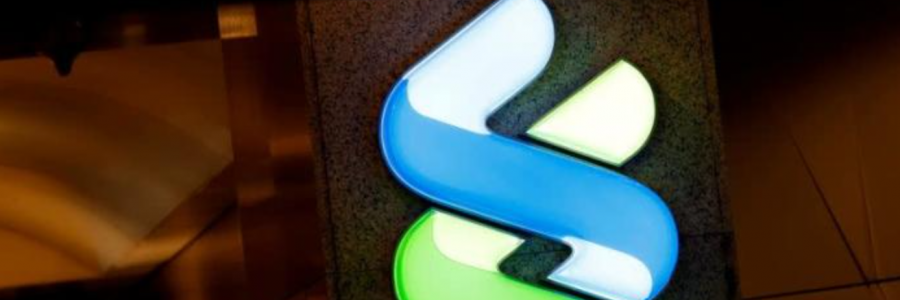
British Empire Linchpin


Crossing Continents recounts Standard Chartered’s story not a critique of British imperialism, silver crises, and currency reforms but of men and British achievement in the East, with in depth details from one of the richest archives available to any commercial bank, by giving rare and compelling perspective on the evolution of international trade and finance, revealing how Britain’s commercial influence has actually worked in practice around the world over one hundred and fifty years. From the 1860s, the City of London’s overseas banks financed the global trade that lay at the core of the British Empire, including two start-up ventures: the Standard Bank of South Africa, which soon developed a powerful domestic franchise at the Cape, and the Chartered Bank of India, Australia and China. Duncan Campbell-Smith, a former banker and journalist, traces their stories in the nineteenth century, their glory days before 1914, and the remarkable survival in the face of global wars and the collapse of world trade in the first half of the twentieth century and gives a compelling record of imperial and post-imperial banking, the white men responsible and the lives they led.
After 1945, the British Empire eventually forced Britain’s overseas banks to confront a different future.
The Standard and the Chartered alarmed at the expansion of American banking, determined in 1969 on a merger as a way of sustaining the best of City’s overseas traditions. Standard Chartered had to grapple with the fading fortunes of its own inherited franchise – with radical changes in the nature of banking its British managers, steeped in the past, proved ill-suited to the challenge. By the late 1980s, efforts to expand in Europe and the USA had brought the merged group to the brink of collapse, although it survived and then pulled off a dramatic recovery by realigned itself, just in time, with the phenomenal growth of Asia’s emerging markets’, many of them in countries where the Chartered had flourished a century earlier. In the process, the group was transformed, trebling its workforce, even brushed aside the global financial crisis of 2008, and by 2012 could look back on a decade of astonishing growth.
The colourful vision for the Victorian era. “glory heads stuck on poles decorated the end of the short road where the bank was”- and a few expatriate bankers escaped health problems not related to the less medicinal qualities of scotch whisky ”. It demanded commitment – marriage was forbidden for those below the rank of accountant- although there were compensations. In Singapore little fish, rice and curry and perhaps a couple of eggs, with claret, forms a very fair foundation on which to begin the labours of the day.
The Chartered Bank of India, Australia and China in effect rescued the Standard Bank of South Africa in 1969. Both banks were mid Victorian foundations with Scottish roots, managed by expatriates, staffed with local clerks and supervised by remote boards.
Chartered looked East from the early days of shipping the City of London’s gold and silver coin, then on to telegraphing foreign exchange and trade finance, it became a linchpin of empire’s commercial life across the whole of Asia. By the 1930s, except for its rival HSBC, Standard Charted was the largest of the City’s 20 overseas banks.
Standard looked south and got lucky Founded to finance a South African wool trade that never took off, but was transformed by diamond and gold discoveries.
By 1960s, political difficulties marginalised the South African business and banking globaliser Chase Manhattan came calling. The Bank of England made it clear that the Americans were unwelcome and Standard Chartered Bank was formed, charting the story next 30 years of the merged company trying to find anew identity. Lacking a strong domestic retail base, guided by several consultant’s reports and strategic initiatives at the expense of operational grip.
After failing to tilt the business towards west, a reversal was achieved in the closing decade of the 20th century in time to identify with fast-growing economies in Asia, and into the new century the business finally took off.
Senior managers were recruited from outside, the empire staffing model was eventually banished, as the wholesale banking was launched into the modern age by the development of a capital markets business and consumer banking was transformed through the acquisition of branch networks in Asia.
Their brilliant decision to avoid mature markets In the west paid off, when the global financial crisis of 2008, Standard had minimal exposure to US subprime mortgages or eurozone sovereigns and was heavily weighed in south-east Asia.
In 2011, CEO Peter Sands and his predecessor Mervyn Davies , who delivered the final glory years, were profiled in the Harvard Business Review as examples of higher ambition leaders, who combined shareholder value with societal worth. August 2012, record profits proved bank’s success.
US fines and settlements relating to money-laundering and sanctions breaking eventually totalled $2bn, growth in China and the rest of Asia showed and there was a $1bn writedown on a Korean acquisition, as profit were wiped out, share price tanked and compliance was given a long overdue overhaul by Bill Winters appointed in 2015.
The fall from grace is not necessarily a shocking story in the context of the industry.
Crossing Continents: A History of Standard Chartered Bank by Duncan Campbell-Smith, Allen Lane £40, 944 pages.
